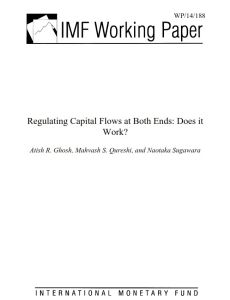Join getAbstract to access the summary!

Join getAbstract to access the summary!
Atish R. Ghosh, Mahvash S. Qureshi and Naotaka Sugawara
Regulating Capital Flows at Both Ends
Does it Work?
IMF, 2014
What's inside?
Have you ever tried drinking from a fire hose? That’s the kind of problem emerging markets face in adjusting to volatile capital flows.
Recommendation
Emerging markets must master a difficult balancing act: While they need adequate investment for development, sequential floods and droughts of cash can destabilize their economies when financial waves shift. Attempts to use capital controls to smooth the flow has rendered mixed results, as aspirations have collided with institutional weaknesses in many countries. Is there a better way? getAbstract recommends this scholarly report from Atish R. Ghosh, Mahvash S. Qureshi and Naotaka Sugawara, economists at the International Monetary Fund, for its comprehensive analysis of the efficacy of capital controls and its case for multilateral cooperation in the management of financial flows.
Summary
About the Authors
Atish R. Ghosh, Mahvash S. Qureshi and Naotaka Sugawara are economists at the International Monetary Fund.



















Comment on this summary